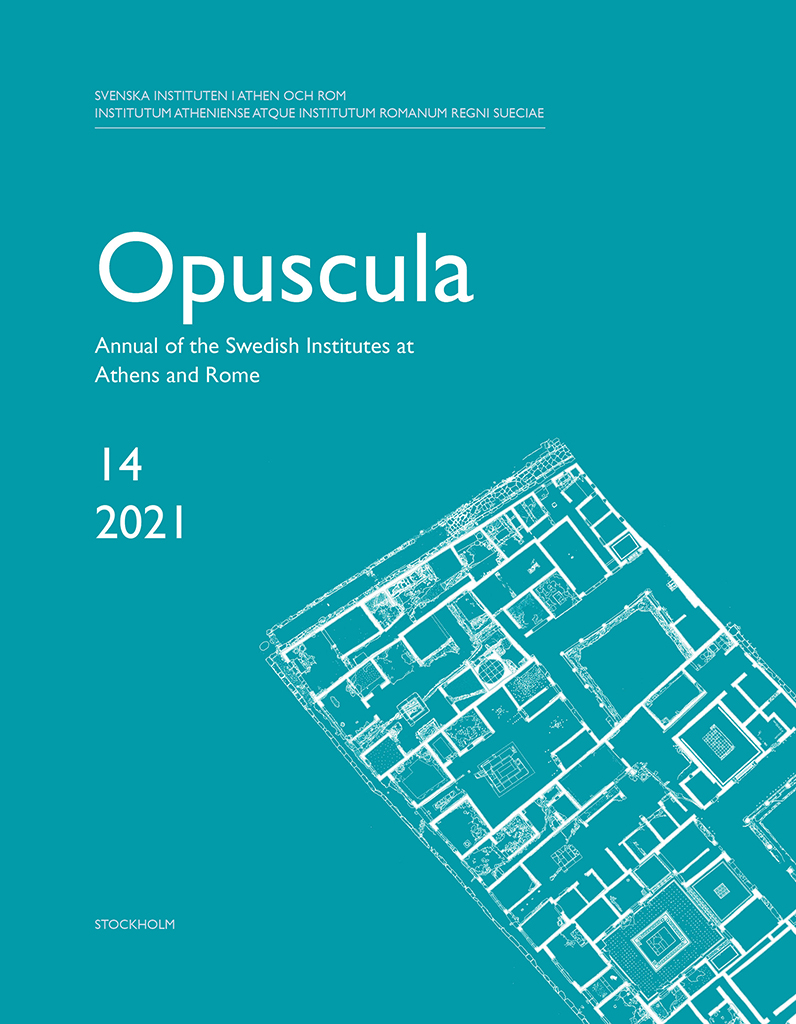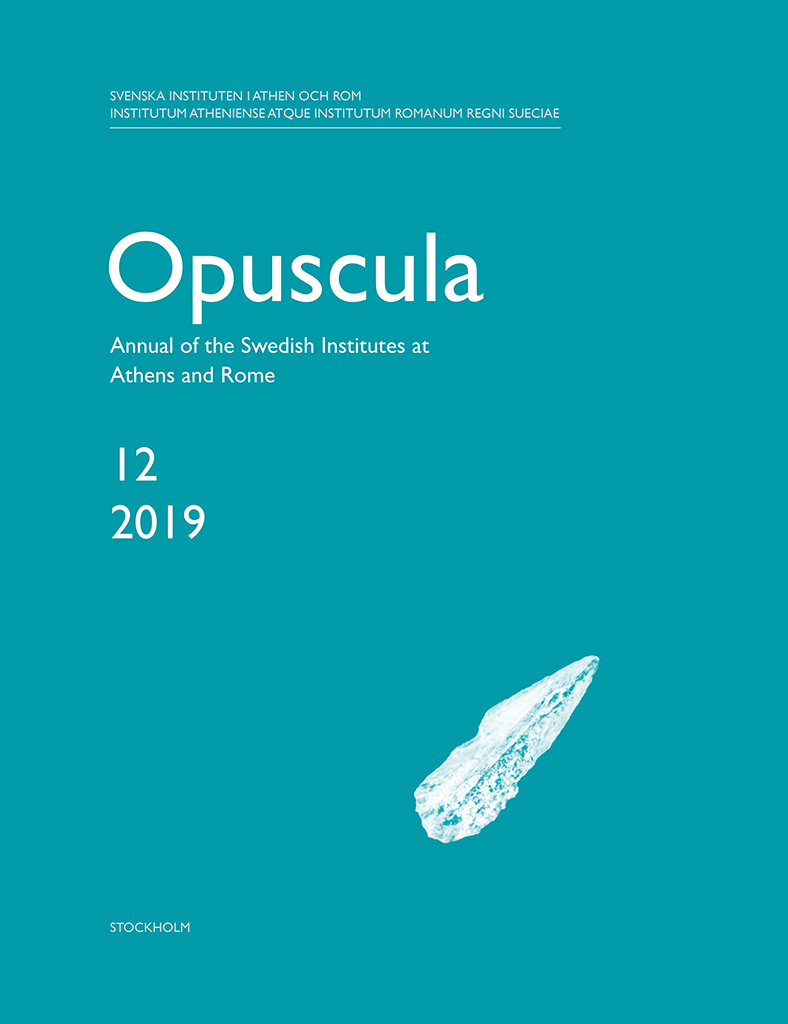Opuscula is published by the Swedish Institutes at Athens and Rome, with the aid of a grant from the Swedish Research Council. Distributed by Eddy.se AB. View journal at ERIH PLUS. All content available with open access. Palaepaphos-Teratsoudhia Tomb 288 (c. 1650 BC–c. 1200 BC) By Vassos Karageorghis (University of Cyprus) & Efstathios Raptou (Department of Antiquities, Cyprus), with appendices by Alexander Donald, Gisèle Clerc & Anna Spyrou Abstract This paper presents a new tomb complex of the Late Bronze Age at Palaepaphos-Teratsoudhia in south-west Cyprus. Although looted, Tomb 288 yielded a representative repertoire of funerary gifts, including seals and scarabs, ranging chronologically from the very beginning of the Late Bronze Age to Late Cypriote IIC, roughly from 1650 to 1200 BC. Tomb 288 has characteristics which are typical of Late Bronze Age tomb architecture in Cyprus and well known in the Paphos region, as well as aspects which have not previously been observed in any necropolis of the period, such as the large central “pillars” which support the roof in Chambers A and B. The tomb’s finds comprise representative examples of the ceramic production of Palaepaphos for a period of some 400 years and illustrate the wealth of this…
Opuscula is published by the Swedish Institutes at Athens and Rome, with the aid of a grant from the Swedish Research Council. Distributed by Eddy.se AB. View journal at ERIH PLUS. All content available with open access. Palaepaphos-Skales Tomb 277. More prestigious burials. With an appendix by Maria A. Socratous By Vassos Karageorghis (The Cyprus Institute, Cyprus) & Efstathios Raptou (Cyprus Museum, Cyprus) Abstract Tomb 277 in the Skales cemetery at Palaepaphos, excavated by the Cyprus Department of Antiquities, is among the richest ever found in the south-west of the island. It dates to the Cypro-Geometric III period (c. 900–750 BC) and was used for multiple burials of important members of the Palaepaphian society, namely warriors and important women (priestesses of the Great Goddess?) judging from the abundant offerings of arms and armour as well as gold jewellery respectively (including gold plaques embossed with the head of the Egyptian goddess Hathor). Notable among the offerings are two bronze basins, six small hemispherical bronze bowls, two bronze mace-heads (symbols of authority), a bronze shield of a rare type, and two richly decorated belts of oriental type. We also mention two iron swords and a bronze spearhead. Among the pottery we note…
Opuscula is published by the Swedish Institutes at Athens and Rome, with the aid of a grant from the Swedish Research Council. Distributed by Eddy.se AB. View journal at ERIH PLUS. All content available with open access. Two new Proto-White Painted ware vases of the pictorial style from Palaepaphos, Cyprus By Vassos Karageorghis & Efstathios Raptou Abstract The publication of two Proto-White Painted ware pictorial style vases found at the necropolis of Palaepaphos-Skales in Cyprus is preceded by a discussion of several issues relating to this style which appeared early in the 11th century BC. In recent years scholars have expressed conflicting views about the origin of the silhouetted pictorial motifs (birds, quadrupeds, human figures etc.), which appear next to the linear geometric decoration on such vases, usually amphorae and kraters. Some have expressed the view that the influence comes from Syria. Here it is proposed that the silhouetted figures of Proto-White Painted ware are derived from a Cypriote style with both local and Aegean characteristics, which developed in the 12th century BC. The pictorial motifs of this style, drawn both in outline and silhouette, are combined with linear geometric motifs, also in panels. In Proto-White Painted ware the pictorial…



